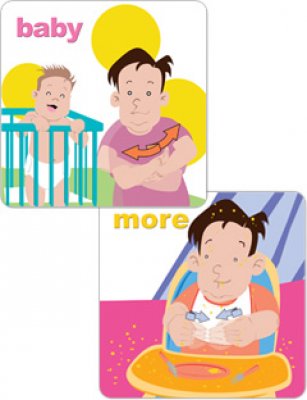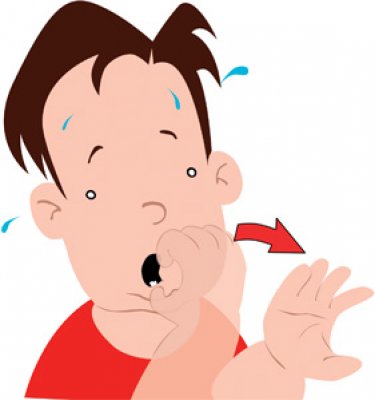All languages have building blocks that create words and sentences. ASL "words" are composed of building blocks called parameters. One sign is created from the combination of four parameters, which are handshape, palm orientation, movement, and location. When looking at a sign illustration, first identify how each of these elements contributes to the sign.

Handshape
There are approximately forty commonly used handshapes in ASL and many others that are seen occasionally. Many of the handshapes appear similar, but are in fact very specific.
Palm Orientation
Orientation of the hands, such as palm facing outward, palm facing inward, thumb side of the hand pointing up or down is an important part of expressing a sign. Hold up your hands and experiment with the many ways you can position them.
Movement
Because ASL is a visually active language, the most difficult requirement of a drawing is to show movement. Arrows show the direction, path, and repetition of the movement. Some signs begin and end in the same location, while others change location from beginning to end and the sign illustration shows this.

Location
Understanding the location of a sign means that you know where to express the sign in relation to your body. Some signs are made near the chest, while others are made near the forehead or shoulder. Changing the location of a sign can change the meaning.
If you are able to identify and understand the four parameters of a sign, your ability to understand the drawings increases.
Since ASL and English do not correspond word-for-word, remember that the ASL sign matches the picture and the English word is a possible translation. This means both the sign and the English word are linked to the picture, but the sign and English word are not linked to each other. For example, HOT in the illustration from First Signs means steamy, scorching, or hot to the touch. The English word "hot" has numerous meanings that are not contained in this particular sign.
Communication is so important at an early age. Now you have the information. Take the next step and see for yourself how enriching ASL can be to your baby's world!
If you have further questions, please contact our friendly customer service. They will be happy to answer any questions you may have.